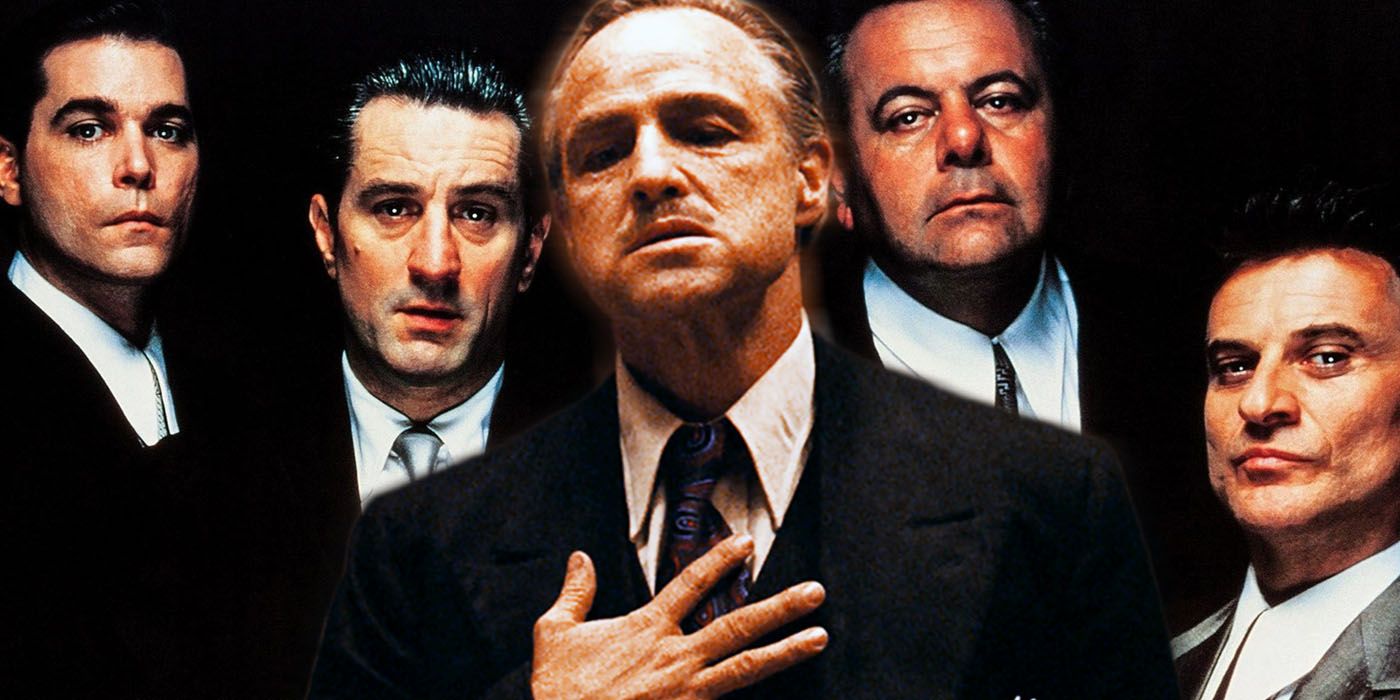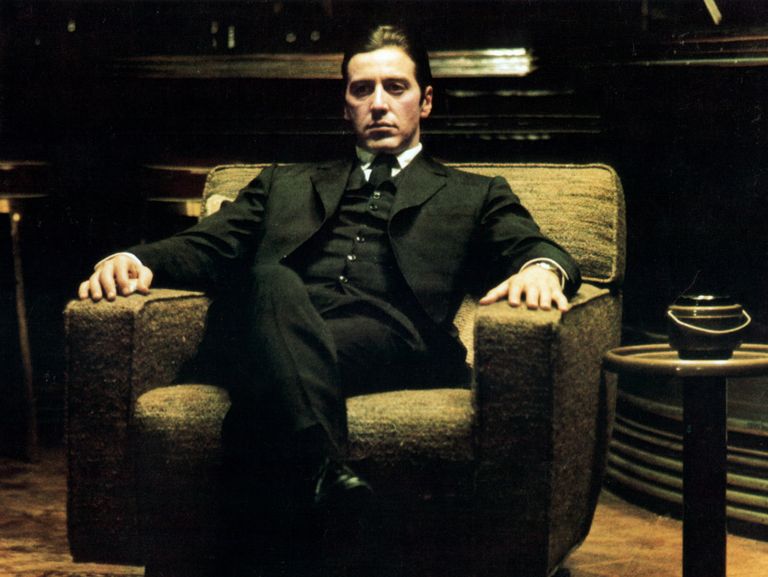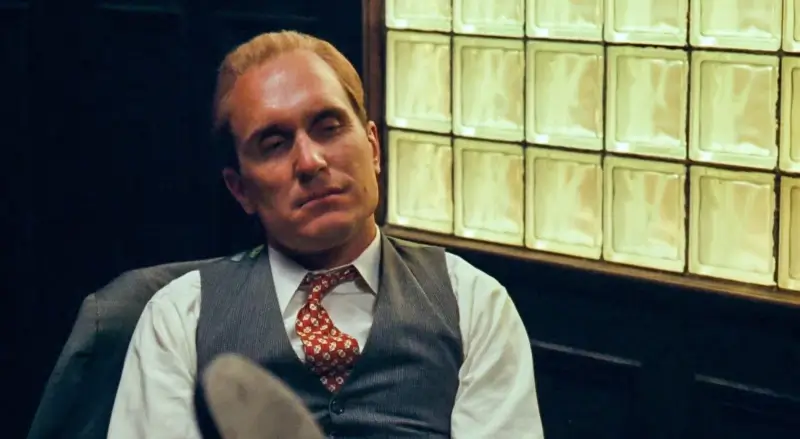The Godfather: A Legendary Movie Masterpiece

The Making of a Masterpiece
The story behind the creation of The Godfather is as fascinating as the film itself. Francis Ford Coppola, the visionary director, fought against the odds to bring Mario Puzo's bestselling novel to life on the silver screen.
Coppola faced numerous challenges during the production, including budget constraints and conflicts with the studio. Yet, he persevered, determined to make a film that would stand the test of time.
One of the key aspects of the film's success was the meticulous casting process. Marlon Brando's portrayal of Don Vito Corleone remains one of the most iconic performances in cinematic history. The casting of Al Pacino as Michael Corleone, initially a controversial choice, proved to be a stroke of genius. The chemistry between the actors lent authenticity to the complex relationships depicted in the film.
Another crucial element was the attention to detail in recreating 1940s New York. The production design team painstakingly recreated the streets of Little Italy to capture the atmosphere of the era. Every set and prop was carefully chosen to transport the audience back in time.
The script, co-written by Coppola and Puzo, brilliantly adapted the epic novel into a cohesive and engaging narrative. The dialogue, filled with memorable lines and powerful monologues, became instantly quotable and added depth to the characters.
Coppola's artistic vision extended to the film's cinematography and music. The use of low lighting and shadowy compositions created a sense of foreboding, while Nino Rota's haunting score amplified the emotional impact of each scene.
The attention to detail and dedication to storytelling paid off. The Godfather was both a critical and commercial success, winning three Academy Awards and garnering a loyal following that continues to grow to this day. It set a new standard for cinematic excellence and cemented its place as a legendary masterpiece.
The making of The Godfather was a testament to the power of collaboration, creativity, and sheer determination. It remains a shining example of how a film can transcend its medium and become a cultural phenomenon.

Exploring the Characters
"The Godfather" is renowned for its exceptional character development, which has contributed to its ongoing popularity and critical acclaim. The film introduces us to an intricate web of characters, each with their own distinct traits and motivations. 
- Don Vito Corleone: Portrayed brilliantly by Marlon Brando, Don Vito is the patriarch of the Corleone crime family. Strong-willed and shrewd, he exudes power and authority, while also displaying a softer side in his love for family. Don Vito's iconic lines and mannerisms have become instantly recognizable in popular culture.

- Michael Corleone: Al Pacino delivers a memorable performance as Michael, the youngest son of Don Vito. Initially distant from the family business, Michael's transformation from an innocent outsider to a ruthless mafia boss forms the heart of the story. His character arc is marked by complex moral dilemmas and a constant battle between family loyalty and personal principles.

- Sonny Corleone: Played by James Caan, Sonny is the hot-headed and impulsive eldest son of Don Vito. Known for his fierce temper and brutal approach to business, Sonny's unpredictable nature often lands him in trouble. Despite his flaws, Sonny's unwavering dedication to his family makes him a captivating and unforgettable character.

- Tom Hagen: Robert Duvall's portrayal of Tom Hagen, the Corleone family's consigliere, is a masterclass in understated power. Tom is the loyal confidant and advisor to Don Vito and later Michael. His calm and rational demeanor make him a valuable asset in the family's operations, and his unwavering adherence to honor sets him apart.

- Kay Adams: Diane Keaton's Kay serves as the outsider who becomes entangled in the world of the Corleones through her relationship with Michael. She represents an honest and moral perspective in a world consumed by darkness. Her character provides a contrasting viewpoint and adds depth to the narrative.
Each character in "The Godfather" is meticulously crafted, with intricate backstories and gripping arcs that keep viewers invested throughout. The film's exploration of their relationships, aspirations, and moral dilemmas creates a rich tapestry of human complexity, making it a standout masterpiece in cinematic history.
The Influence and Legacy
The Godfather's impact on cinema and popular culture is undeniable. Upon its release in 1972, the film redefined the gangster genre and set a new standard for storytelling. Its success paved the way for a new era of crime films that would follow in its footsteps.
One of the most significant legacies of The Godfather is its portrayal of complex and compelling characters. The film introduced audiences to the intricate dynamics of the Corleone family, making them empathize with characters who were simultaneously ruthless and vulnerable. This nuanced portrayal of the mafia was a departure from the typical one-dimensional gangsters seen in previous movies, and it set a new benchmark for character development.
Another aspect of The Godfather's influence lies in its technical achievements. The film's cinematography, directed by Gordon Willis, used innovative techniques such as low lighting and shadow play to create a dark and atmospheric visual style. These techniques not only enhanced the film's dramatic impact but also influenced future filmmakers who sought to emulate the distinctive look of The Godfather.
Furthermore, The Godfather's script, written by Mario Puzo and Francis Ford Coppola, is often lauded for its masterful storytelling. The film tackles themes of family, loyalty, power, and morality, weaving them into a captivating narrative that spans decades. Its memorable dialogue and quotable lines have become ingrained in popular culture, further solidifying the film's lasting legacy.
The Godfather's impact extends beyond the boundaries of cinema. It has influenced countless filmmakers who have sought to capture the same level of depth and complexity in their own work. Its themes and characters have been referenced and parodied in various forms of media, cementing its status as a cultural touchstone.
In conclusion, The Godfather's influence and legacy can be seen in the way it revolutionized the gangster genre, its technical achievements, its memorable characters, and its enduring impact on popular culture. Even after nearly five decades, the film continues to captivate and inspire audiences, solidifying its status as a legendary movie masterpiece. Analyzing the Cinematography
The cinematography of "The Godfather" is nothing short of remarkable. The film was beautifully shot by cinematographer Gordon Willis, who created a visual style that perfectly complemented the story being told.
Behind the Scenes: Stories and Anecdotes
- Casting Marlon Brando: When it came to casting for the iconic role of Don Vito Corleone, director Francis Ford Coppola faced reluctance from the studio to approve Brando. However, Coppola, convinced of Brando's brilliance, conducted a screen test where he stuffed cotton balls in his mouth to mimic the character's signature jowls. This test sealed the deal, marking the beginning of a legendary portrayal that would forever be associated with the character.
- The Horse Head Scene: One of the most memorable scenes in the film is when a horse's head is placed in the bed of a movie producer who refused to cast an actor. To achieve this shocking effect, the production team used a real horse's head, procured from a nearby dog food company. The shock and horror on the actor's face were authentic as he had no idea about the nature of the prop until the scene was filmed.
- Improvised Dialogues: Al Pacino, who played the role of Michael Corleone, was known for improvising some of his dialogues. One notable example is the line, "I know it was you, Fredo. You broke my heart." In that scene, Pacino improvised this powerful line, stunning both the cast and crew with its emotional impact. This spontaneous moment became an unforgettable part of the movie's dialogue.
- Brando's Script Troubles: Marlon Brando often had trouble remembering his lines and, to make things more challenging for the crew, refused to wear an earpiece to prompt him. This led the production team to come up with creative solutions. During the famous restaurant scene, Brando had his lines written on cue cards and placed strategically around the set, so he could discreetly refer to them during the take.
- The Unseen Actor: In the scene where Vito Corleone is lying in his hospital bed, his son Michael visits him. However, the actor playing Michael's son was sick that day, so a stand-in was used to represent the child in the bed. This little-known fact showcases the intricate logistics involved in movie-making and how creative solutions are often needed to overcome unforeseen challenges.
- The Trilogy's Legacy: While it is widely recognized that "The Godfather" is a cinematic masterpiece, the making of the film was not without its difficulties. Director Francis Ford Coppola faced numerous obstacles, including budget constraints and studio interference. Despite these challenges, the film's impact on popular culture and its status as one of the greatest movies of all time are a testament to the dedication and talent of everyone involved.
- Inside Jokes: Behind the scenes, the cast and crew developed their own inside jokes. For instance, during the wedding scene, actor James Caan hid a transistor radio inside his jacket, playing a baseball game, much to the amusement of his fellow actors. These light-hearted moments added a sense of camaraderie to the intense and demanding production.
- Real Mafia Connections: While "The Godfather" was a work of fiction, the film's portrayal of the Mafia resonated with audiences, partially due to the consulting work of individuals with real Mafia ties. Coppola sought advice from people connected to the criminal world to ensure authenticity. Their insights provided a gritty realism to the film that captivated audiences and added layers of nuance to the characters.
These behind-the-scenes stories and anecdotes give us a glimpse into the creative process and challenges faced during the making of "The Godfather." They provide a deeper understanding of the film's impact on popular culture and reinforce its legendary status as a movie masterpiece.
The Godfather's Enduring Appeal
Once "The Godfather" hit the big screen in 1972, it quickly became an iconic masterpiece that has continued to captivate audiences for decades. The film's enduring appeal can be attributed to several key factors.
First and foremost, "The Godfather" boasts an exceptional story that combines elements of crime, family, loyalty, and power. The narrative is expertly crafted, drawing viewers into the world of the Corleone family and captivating them with its complex characters and intricate plot twists. The film's screenplay, based on the novel by Mario Puzo, is a masterclass in storytelling, blending drama, suspense, and intense emotion.
The film is also elevated by its stellar cast, led by Marlon Brando in his iconic role as Don Vito Corleone. Brando's nuanced and powerful performance is a testament to his unparalleled talent, earning him an Academy Award for Best Actor. Alongside Brando, Al Pacino delivers a career-defining performance as Michael Corleone, showcasing his transformation from an ambitious and conflicted outsider to a calculating and ruthless criminal mastermind.
Another element that contributes to the enduring appeal of "The Godfather" is its timeless themes and universal messages. The film explores the complexities of power, loyalty, and family dynamics, all of which remain relevant and resonant to this day. It delves into the moral ambiguity of the characters' actions and the consequences of their choices, forcing viewers to reflect on larger questions of identity, ambition, and the nature of power.
Furthermore, "The Godfather" is renowned for its technical brilliance. The film's cinematography, helmed by Gordon Willis, is a work of art in itself, with its use of shadows and muted color palette perfectly capturing the dark and brooding atmosphere of the story. The iconic score, composed by Nino Rota, adds another layer of depth and emotion to the film, becoming instantly recognizable and forever associated with the Corleone family.
"The Godfather" has left an indelible mark on the cinematic landscape, inspiring countless filmmakers and influencing popular culture. Its enduring appeal can be attributed to its compelling storytelling, exceptional performances, timeless themes, and technical brilliance. Even after nearly five decades, "The Godfather" continues to captivate and enthrall audiences, solidifying its status as a legendary movie masterpiece.






































